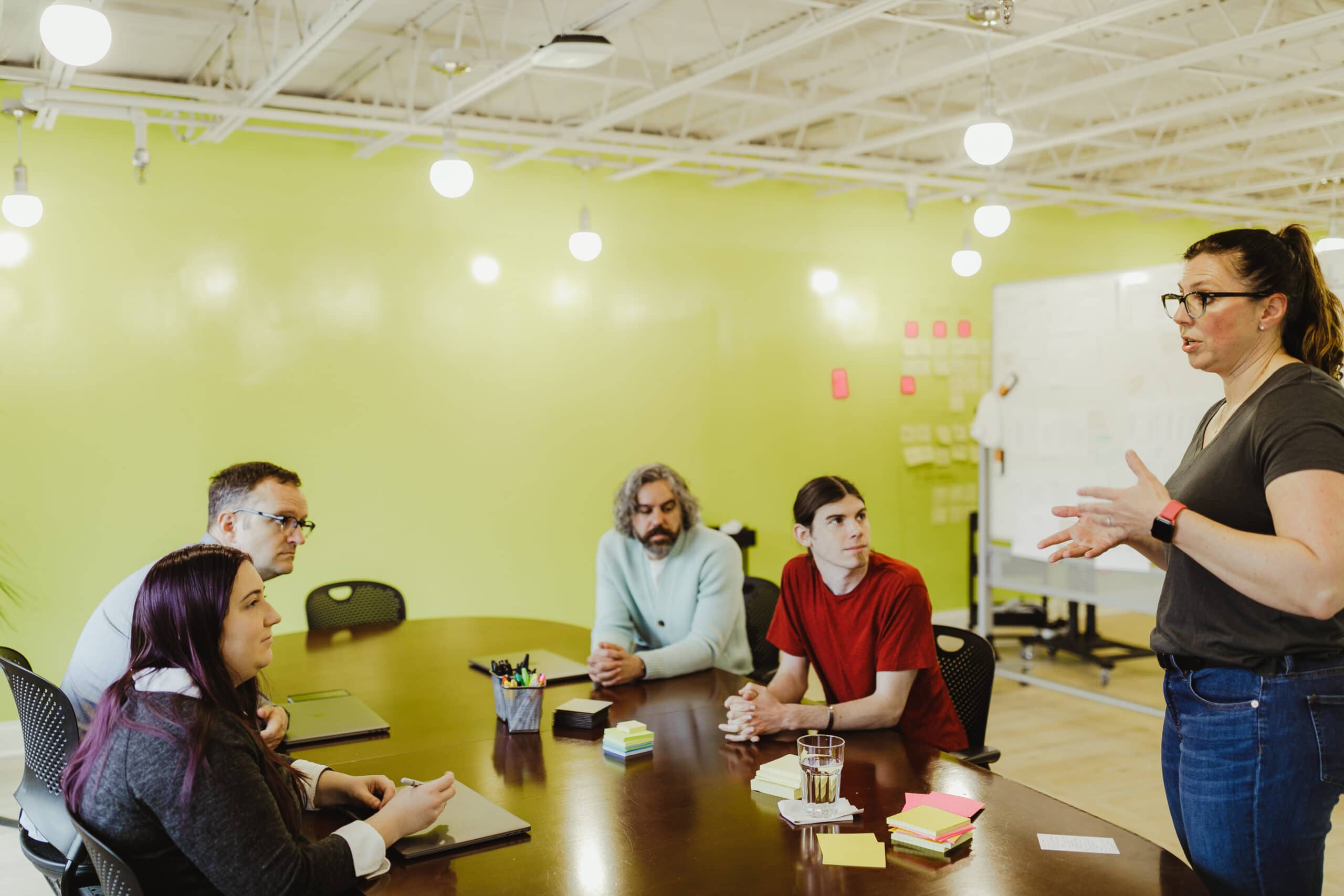Beginning a project with a new team, new client, and new work can be overwhelming. Here are five things I do to figure out how to get started and to keep our team moving.
1. Discuss how you’ll communicate.
There are so many ways to communicate. Add in individual preferences and the shift to hybrid or distributed work being more common, and it becomes even more important to have this discussion with your team early. I find it beneficial to understand everyone’s preferences so that we have fewer misunderstandings going forward. For example, I tell everyone on project teams I work with that messaging in Slack is my preferred method, and I assume that, after 5 p.m., I won’t get a response until the next business day.
It’s also helpful to talk about when to use different communication tools and how to communicate with a client. I’ve found that quick discussions are best suited for chat tools like Slack. Status reports, project updates, or decisions needing more formal agreement are better suited for email.
2. Talk about the “why.”
I find it valuable to make sure the team understands why this work is important to our client. Understanding the goals, constraints, and pressures of our client allows our teams to make really good choices while designing the app from a user and technology perspective. As part of that, I like to make sure the team understands any upcoming timeline considerations and legal requirements. I also like to make sure everyone understands the motivations and desires of the users.
On one of our recent projects, we determined that the client had some internal deadlines. Understanding those timelines gave us a lens through which to consider trade-offs that would be required to meet those timelines, and talk with our client about them.
3. Talk about how to track startup tasks.
There is always ambiguity at the beginning of a project. Everyone is figuring out how to get started, what to work on, and how to work together. There are often lots of tasks that need to be completed and visible to everyone on the team. These tasks are things like “setup invoicing activities” and “schedule check-in meetings.” I’ve found it can be helpful to have everyone work from a shared board like Trello or Asana to track our startup tasks.
4. Talk about a schedule.
As a project gets started, the activities that are needed next change quickly. Because of this, there is always a need to talk even if we aren’t yet following a scrum cadence. I’ve found it is helpful to get a few regular meetings on the calendar while everyone is getting started. Doing so lets everyone know when we will talk as a team and will give everyone a space to be able to discuss their progress and what comes next. I like to meet every other day for 30-60 minutes or every day for 15 minutes (like a standup).
5. Roll with change!
I’ve found that at the beginning of a project the only thing I can count on is that things will change! Sometimes the needs of our clients have changed, sometimes the work changes as we uncover more detailed information. Being flexible is important at all times but especially important during the ambiguity at the beginning of a project.
The beginning of a project can be overwhelming, but these strategies have been useful for getting started and keeping the project moving forward.

